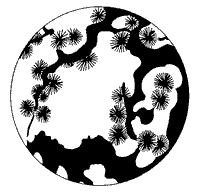History
 At the end of the Ming Dynasty, shortly before 1644 A.D., the Manchu Army from the north east of China was recruited to stop the civil war. Despite the fact that the Manchus had vowed to leave the country right after the revolution was repressed and even though they comprised only 10 percent of the total population of China, they eliminated Hons’ resistance and took power over them. In 1644 the Manchus founded the Ching Dynasty, which lasted until 1911.
At the end of the Ming Dynasty, shortly before 1644 A.D., the Manchu Army from the north east of China was recruited to stop the civil war. Despite the fact that the Manchus had vowed to leave the country right after the revolution was repressed and even though they comprised only 10 percent of the total population of China, they eliminated Hons’ resistance and took power over them. In 1644 the Manchus founded the Ching Dynasty, which lasted until 1911.
During that period the practice of Gung Fu was prohibited by law. Whoever was arrested practicing Gung Fu would be imprisoned for a long time. However, there was an exception; Shil Lim Temple, considered by the Tibetan monks as of the same religion, was treated with privileges. The practice of Gung Fu was allowed there, but only for spiritual and health purposes.
In this context the government respected the Shaolin Temple as a Buddhist sanctuary, even after the Boxers’ revolt. Some of the experts of the Hons martial arts secretly started organizing a revolutionary army that practiced Gung Fu in the Shaolin temple. The traditional Shaolin style required 15 to 20 years of practice to be mastered. The need for a new and more effective martial art became more crucial, when some of the Gung Fu masters joined the Manchu government. Five Shaolin Grandmasters decided to devise a new style, which would demand a shorter amount of time to be mastered and would be more effective than any other martial art. The Grandmasters discussed the merits of each one of their own techniques in Gung Fu and selected the most sufficient methods of practice from each system. They elaborated the theory and training program of Wing Chun, which would only take the pupil five years to learn. They named this style Wing Chun, which stands for hope for the future in Chinese. However, right before this new art was put into practice, the Manchu government became aware of it and had the Shaolin temple invaded and burnt down. Nun Ng Mui, the only one of the five Grandmasters to survive, applied theory to practice and taught this new martial art to an orphan girl that named Wing Chun after it.
Before the Temple was destroyed, all its pupils had to take their final exams at the tunnel of 108 wooden dummies. Those were semi-mechanical, strategically distributed wooden dummies that performed all kinds of attack to the practitioner. The examinee had to make his way through the tunnel deflecting all the attacks in a short period of time. Over the centuries many efficient martial artists failed this test. However, the wooden dummies tunnel and its pattern was destroyed along with the Temple. Grandmaster Ng Mui replaced the 108 dummies with a single wooden dummy of the Wing Chun style, which a very elaborated and challenging apparatus for the practice of Gung Fu, because it helps the practitioner develop speed, accuracy and coordination skills.
